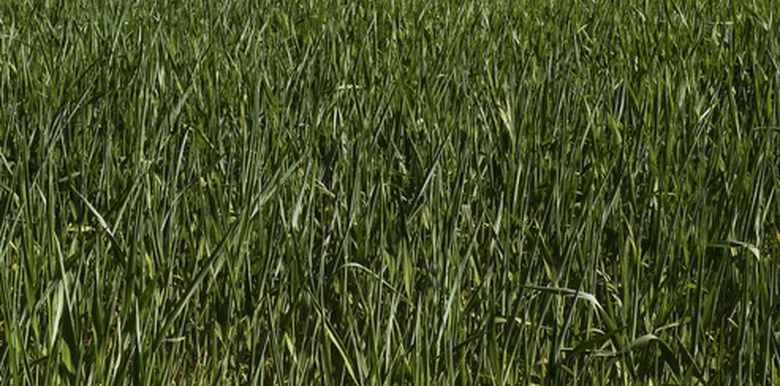How To Overseed St. Augustine Grass
Things Needed
- Mower
- Rake
- Grass seed
- Mechanical or hand spreader
St. Augustine grass makes a beautiful lawn, but over time it can become sparse and thin in appearance. The growth of grass slows down over five or six years, so you'll need to overseed to thicken it up and make it look lush again. In addition, St. Augustine grass is affected by freezing temperatures, pests and turf buildup. Overseeding it every three to four years will keep the grass looking thick and help it resist disease.
Step 1
Mow your grass as short as possible. Put the lawnmower on its lowest setting. It's OK if you scrape the ground. Rake up or bag the clippings.
- St. Augustine grass makes a beautiful lawn, but over time it can become sparse and thin in appearance.
- The growth of grass slows down over five or six years, so you'll need to overseed to thicken it up and make it look lush again.
Step 2
Rake the lawn with a metal rake to collect debris, such as stones and sticks. Leave the grass stubble and bare soil in place only. The new grass seed has to be in direct contact with the soil to germinate. The stubble will help keep the seed in place.
Step 3
Use the instructions on the seed bag to determine how much seed to use when overseeding St. Augustine grass. If there are instructions for seeding a new lawn and overseeding, follow the instructions for a new lawn to get thick grass.
Step 4
Fill a mechanical or hand spreader with St. Augustine grass seed. Use a hand spreader for a small area of grass, or a mechanical one for a large lawn.
- Rake the lawn with a metal rake to collect debris, such as stones and sticks.
- Use the instructions on the seed bag to determine how much seed to use when overseeding St. Augustine grass.
Step 5
Rake the new seed into the soil. Cover it with 1/8 inch of soil to keep it in place and encourage the roots to spread and grow.
Step 6
Water the St. Augustine grass seed until it's moist. Water twice a day to keep it moist. If it dries out, up to 30 percent of the seed can die, according to Yardener. Continue watering regularly for two weeks. It takes St. Augustine grass 10 to 14 days to germinate.
- Rake the new seed into the soil.
- Water the St. Augustine grass seed until it's moist.
Tip
Overseed St. Augustine grass in early September.
Warning
Don't worry about overseeding if your lawn has a small damaged area, smaller than 1 foot in size. St. Augustine grass will fill in these spots over the next month when left alone.
